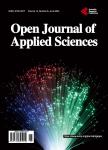LSSVM Combined with SPA Applied to Near-Infrared Quantitative Determination of the Octane in Fuel Petrol Samples
LSSVM Combined with SPA Applied to Near-Infrared Quantitative Determination of the Octane in Fuel Petrol Samples作者机构:Guangxi Key Laboratory of Beibu Gulf Marine Biodiversity Conservation (Qinzhou University) Qinzhou China College of Science Guilin University of Technology Guilin China Guangdong Spectrastar Instruments Co. Ltd. Guangzhou China
出 版 物:《Open Journal of Applied Sciences》 (应用科学(英文))
年 卷 期:2018年第8卷第9期
页 面:422-430页
学科分类:1002[医学-临床医学] 100214[医学-肿瘤学] 10[医学]
主 题:Near-Infrared Fuel Petrol The Octane Number SPA LSSVM
摘 要:Least square support vector machine (LSSVM) combined with successive projection algorithm (SPA) method was applied for?near-infrared (NIR)?quantitative determination of the octane number in fuel petrol. The NIR spectra of 87 fuel petrol samples were?scanned?for model establishment and optimization. First order derivative Savitzky-Golay smoother?(1st-d’SG) was?utilized to improve the?NIR predictive ability. Its pretreatment effect was compared with the raw data.?SPA was?applied for the extraction of informative wavelengths. Considering the linear and non-linear?training mechanism,?LSSVM?regression was employed to establish calibration models.?The correlation coefficient (R) and root mean square error (RMSE) were used as the model evaluation indices;accordingly the octane number in fuel petrol?was quantitatively determined with the prospective predictive indices. Results showed that?after pretreated by 1st-d’SG, 8 SPA-selected wavelengths?was generated as the inputs of LSSVM, so that the calibration models were optimized in the way of combining the SPA-LSSVM regression with the SG smoother.?The prediction results were quite satisfactory, with the calibrating correlation coefficient of?0.951 and the RMSE?of 3.282. An independent?testing?sample set was used to evaluate the optimal model, the testing?correlation coefficient?was 0.903 and the RMSE was 4.128. We conclude that?NIR spectrometry is feasible to determine the octane in fuel petrol?by establishing SPA-LSSVM?models. The 1st-d’SG pretreatment has?the?advantage of selecting wavelengths containing the implicit information. The combination of 1st-d’SG pretreatment and SPA-LSSVM show its applicable potential to predict the?octane number?in?fuel petrol.



